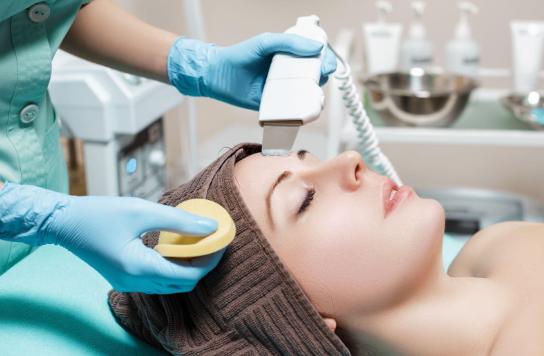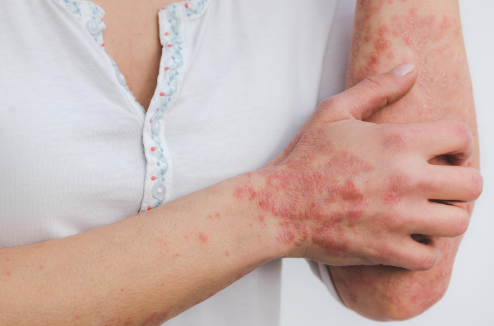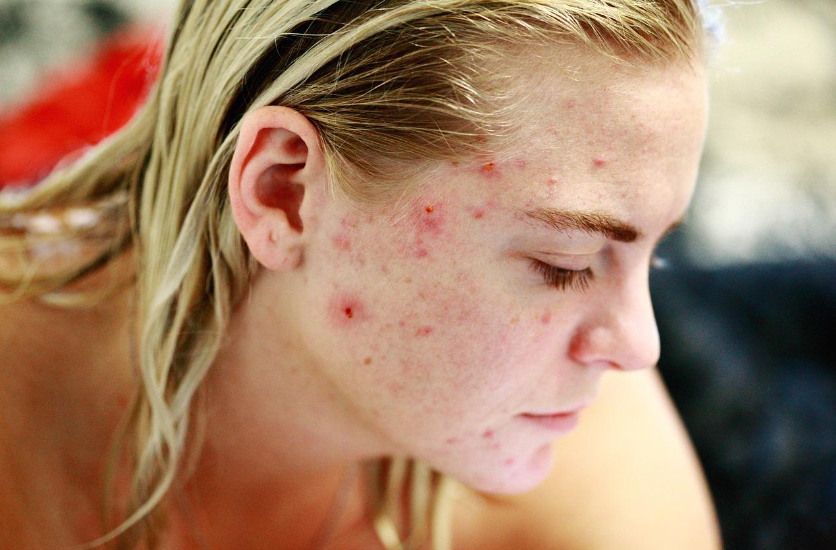Understanding Skin Cancer: Types, Causes, and Risk Factors
Understanding Skin Cancer: Types, Causes, and Risk Factors

The warm embrace of the sun holds a hidden danger called skin cancer. This pervasive disease affects millions in the United States, with over 5.4 million cases diagnosed annually. As the numbers continue to rise, it's crucial to shed light on this menacing threat. Fortunately, with early detection and the right treatment, you can safeguard the well-being of your or a loved one’s skin.
Read more to learn about the different types of skin cancer, their causes, and the risk factors involved.
What Is Skin Cancer
Skin cancer is a condition characterized by the abnormal growth of skin cells. It develops when skin cells undergo genetic mutations that cause them to multiply rapidly and form tumors or lesions on the skin. The leading cause of skin cancer is exposure to ultraviolet (UV) radiation from the sun or artificial sources like tanning beds.
Types of Skin Cancer
Basal Cell Carcinoma (BCC)
Basal cell carcinoma is the most common type of skin cancer. It typically develops in skin areas frequently exposed to the sun, such as the face, neck, and hands. BCC usually appears as a flesh-colored or pinkish bump on the skin that may have a pearly or waxy texture. It can also manifest as a flat, pinkish patch or a brown, black, or blue lesion. BCC grows slowly and rarely spreads to other parts of the body. However, if left untreated, it can cause local damage and disfigurement.
Squamous Cell Carcinoma (SCC)
Squamous cell carcinoma is the second most common type of skin cancer. It often develops on sun-exposed areas such as the face, ears, lips, and back of the hands. SCC typically appears as a red, scaly patch or a firm, raised nodule. The skin may become crusted or ulcerated, and it may bleed easily. Unlike BCC, SCC has a higher risk of spreading to other body areas, including lymph nodes and internal organs. Early detection and treatment are crucial to preventing its spread and complications.
Melanoma
Melanoma is a less common but more severe type of skin cancer. It originates in the pigment-producing cells called melanocytes, which give color to the skin. Melanoma can develop anywhere on the body, including areas not exposed to the sun. It often appears as a new or changing mole. Critical signs of melanoma include asymmetry (one half of the mole is different from the other), irregular borders, varied colors, a diameter larger than 6mm, and evolving features (changes in size, shape, or color over time). Melanoma can metastasize or spread to other body parts, making early detection and treatment critical for improved outcomes.
Merkel Cell Carcinoma
Merkel cell carcinoma is a rare but aggressive type of skin cancer that typically appears as firm, painless nodules or lesions on the face, head, or neck. Merkel cell carcinoma can spread quickly to lymph nodes and other body parts.
Cutaneous Lymphoma
Cutaneous lymphoma is a group of cancers affecting lymphocytes, a white blood cell type. These cancers can appear as red, scaly patches or raised bumps on the skin and may mimic other skin conditions. Cutaneous lymphomas often have different subtypes and require specialized diagnosis and treatment.
Symptoms of Skin Cancer
The most prevalent indication to be mindful of when it comes to skin cancer is unusual changes in the skin. These changes can include new growths, sores that do not heal, or alterations in existing moles. It's important to note that skin cancers can vary in appearance.
For melanoma specifically, it can be helpful to remember the
ABCDEs of melanoma as a guide for identifying potential warning signs:
- A for Asymmetrical: Does the mole or spot have an irregular shape where one half looks different?
- B for Border: Is the border of the mole or spot irregular, jagged, or poorly defined?
- C for Color: Does the mole or spot have uneven coloring, with shades of brown, black, white, red, or blue?
- D for Diameter: Is the mole or spot more significant in size than a pea (approximately 6mm or more in diameter)?
- E for Evolving: Has the mole or spot changed in appearance, size, shape, or color during the past few weeks or months?
Risk Factors of Skin Cancer
Several risk factors can increase a person's likelihood of developing skin cancer. It's important to note that having one or more risk factors does not necessarily mean an individual will develop the disease, but understanding these factors can help take preventive measures and promote early detection. Here are some common risk factors associated with skin cancer:
- Exposure to Ultraviolet (UV) Radiation
- Skin tone
- History of Sunburns
- Family History
- Moles and Precancerous Skin Lesions
- Weakened Immune System
- Exposure to Environmental Factors
- Personal History of Skin Cancer
Screening Tests for Skin Cancer
Screening tests can play a crucial role in early skin cancer detection. They are essential for high-risk individuals due to family history, previous skin cancer diagnosis, or excessive sun exposure. Here are the standard screening tests used for skin cancer:
Skin Self-Examination (SSE)
Skin self-examination involves regularly checking your skin for any changes or abnormalities. It is a simple and effective method to detect early signs of skin cancer. During an SSE, carefully examine your entire body, including areas not commonly exposed to the sun. Look for new moles, changes in existing moles, or any suspicious growths or lesions. If you notice any concerning changes, consult a healthcare professional for further evaluation.
Clinical Skin Examination
A clinical skin examination involves a healthcare professional, typically a dermatologist, thoroughly examining your skin for signs of skin cancer. They will visually inspect your skin, including areas that are difficult for self-examination. This examination allows for a more comprehensive assessment and identifies any suspicious lesions that may require further investigation or biopsy.
Biopsy
A skin biopsy is a diagnostic procedure that involves removing a small sample of suspicious skin tissue for laboratory analysis. It is the definitive method to determine if a skin lesion is cancerous or non-cancerous. Depending on the size and characteristics of the lesion, there are different types of skin biopsies, including shave biopsy, punch biopsy, and excisional biopsy. The biopsy results provide essential information for an accurate diagnosis and treatment planning.
Treatment Methods for Skin Cancer
Treatment choice depends on various factors, including the type, size, and location of the skin cancer and the individual's overall health and preferences. It's essential to consult with a healthcare professional or dermatologist to determine the most suitable treatment approach for your specific situation.
Topical Medications
Topical medications may be used for certain superficial forms of skin cancer, such as basal cell carcinoma or actinic keratosis. These medications are applied directly to the affected area and work by destroying cancerous or precancerous cells. Common topical treatments include creams or gels containing imiquimod, 5-fluorouracil (5-FU), or ingenol mebutate.
Photodynamic Therapy
Photodynamic therapy (PDT) involves using a photosensitizing agent on the skin and then exposing it to a specific wavelength of light. Cancer cells take in a special substance that becomes activated by light. When the light turns on, it creates powerful molecules that harm and kill the cancer cells. Oncologists often prefer PDT to treat superficial skin cancers and specific precancerous conditions.
Mohs Surgery
Mohs surgery is a specialized surgical technique for treating skin cancer, mainly basal and squamous cell carcinoma. It involves removing thin layers of skin tissue one at a time and examining each layer under a microscope to check for the presence of cancer cells. This process is repeated until no cancer cells are detected, ensuring the maximum amount of healthy tissue is preserved.
Radiation Therapy
Radiation therapy uses high-energy X-rays or other forms of radiation to kill cancer cells or inhibit their growth. It may be used as the primary treatment for skin cancer in cases where surgery is not feasible or as adjuvant therapy following surgery to target any remaining cancer cells. Radiation therapy is often recommended for more advanced or aggressive skin cancers.
Cryosurgery
Cryosurgery, or cryotherapy, involves freezing the cancerous tissue using liquid nitrogen or other freezing agents. The extreme cold destroys the abnormal cells, and the area eventually heals as new, healthy skin forms. Cryosurgery is commonly used for treating certain precancerous conditions or small, low-risk skin cancers.
Laser Surgery
Laser surgery utilizes a focused beam of high-intensity light to remove or destroy cancerous cells. It is often used for superficial skin cancers or precancerous lesions on the skin's surface. Laser surgery is a precise technique that can selectively target cancer cells while minimizing damage to surrounding healthy tissue.
Excisional Surgery
Excisional surgery involves surgically removing the entire cancerous lesion and a surrounding margin of healthy skin. This method is commonly used for various types of skin cancer, including melanoma. The excised tissue is sent to a laboratory for pathological examination to ensure complete cancer removal.
Electrosurgery
Electrosurgery uses an electric current to cut or destroy cancerous tissue. It is often used with other surgical techniques or to control bleeding during surgery. Medical professionals can utilize electrosurgery to treat minor skin cancers or eliminate any remaining cancer cells following alternative treatment approaches.
Ready to take charge of your skin's health and protect yourself from the dangers of skin cancer? Visit
Pine Belt Dermatology, your trusted partner in skin care.
Our experienced team of dermatologists is dedicated to providing comprehensive screenings, personalized treatment plans, and expert guidance.
Contact us today and embark on a journey toward a lifetime of healthy skin.



Petal Office
Phone:
Fax:
601-336-7826
Address:
Hours of Operation:
Mon-Fri: 8:00am to 4:30pm
Hattiesburg Office
Phone:
Fax:
601-475-9969
Address:
Hours of Operation:
Mon-Fri: 8:00am to 4:30pm
Ellisville Office
Biloxi Office
Phone:
Fax:
228-232-0874
Address:
1009 Tommy Munro Drive, Suite A
Hours of Operation:
Mon-Fri: 8:00am to 4:30pm
Ocean Springs Office
All Rights Reserved | Pine Belt Dermatology








